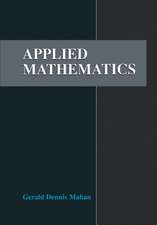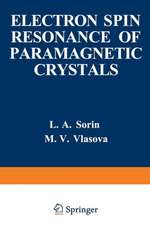Hybrid Finite Element Method for Stress Analysis of Laminated Composites
Autor Suong Van Hoa, Wei Fengen Limba Engleză Paperback – 22 feb 2014
| Toate formatele și edițiile | Preț | Express |
|---|---|---|
| Paperback (1) | 945.47 lei 6-8 săpt. | |
| Springer Us – 22 feb 2014 | 945.47 lei 6-8 săpt. | |
| Hardback (1) | 951.47 lei 6-8 săpt. | |
| Springer Us – 30 mar 1998 | 951.47 lei 6-8 săpt. |
Preț: 945.47 lei
Preț vechi: 1153.02 lei
-18% Nou
Puncte Express: 1418
Preț estimativ în valută:
180.92€ • 189.37$ • 150.58£
180.92€ • 189.37$ • 150.58£
Carte tipărită la comandă
Livrare economică 31 martie-14 aprilie
Preluare comenzi: 021 569.72.76
Specificații
ISBN-13: 9781461376262
ISBN-10: 1461376262
Pagini: 316
Ilustrații: XI, 298 p.
Dimensiuni: 155 x 235 x 17 mm
Greutate: 0.45 kg
Ediția:Softcover reprint of the original 1st ed. 1998
Editura: Springer Us
Colecția Springer
Locul publicării:New York, NY, United States
ISBN-10: 1461376262
Pagini: 316
Ilustrații: XI, 298 p.
Dimensiuni: 155 x 235 x 17 mm
Greutate: 0.45 kg
Ediția:Softcover reprint of the original 1st ed. 1998
Editura: Springer Us
Colecția Springer
Locul publicării:New York, NY, United States
Public țintă
ResearchDescriere
This book has one single purpose: to present the development of the partial hybrid finite element method for the stress analysis of laminated composite structures. The reason for this presentation is because the authors believe that partial hybrid finite element method is more efficient that the displacement based finite element method for the stress analysis oflaminated composites. In fact, the examples in chapter 5 of this book show that the partial hybrid finite element method is about 5 times more efficient than the displacement based finite element method. Since there is a great need for accurate and efficient calculation of interlaminar stresses for the design using composites, the partial hybrid finite method does provide one possible solution. Hybrid finite method has been in existence since 1964 and a significant amount of work has been done on the topic. However, the authors are not aware of any systematic piece of literature that gives a detailed presentation of the method. Chapters of the displacement finite element method and the evolution 1 and 2 present a sununary of the hybrid finite element method. Hopefully, these two chapters can provide the readers with an appreciation for the difference between the displacement finite element method and the hybrid finite element. It also should prepare the readers for the introduction of partial hybrid finite element method presented in chapter 3.
Cuprins
Preface. 1. Introduction. 2. The Hybrid Finite Element Method. 3. Development of Hybrid Element Technique for Analysis of Composites. 4. Partial Hybrid Elements for Analysis of Composites. 5. Numerical Examples of Finite Element Analysis and Global/Local Approach. Index.


















